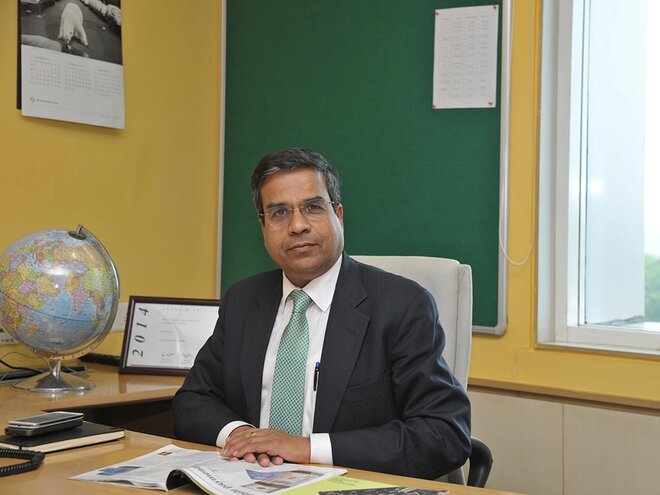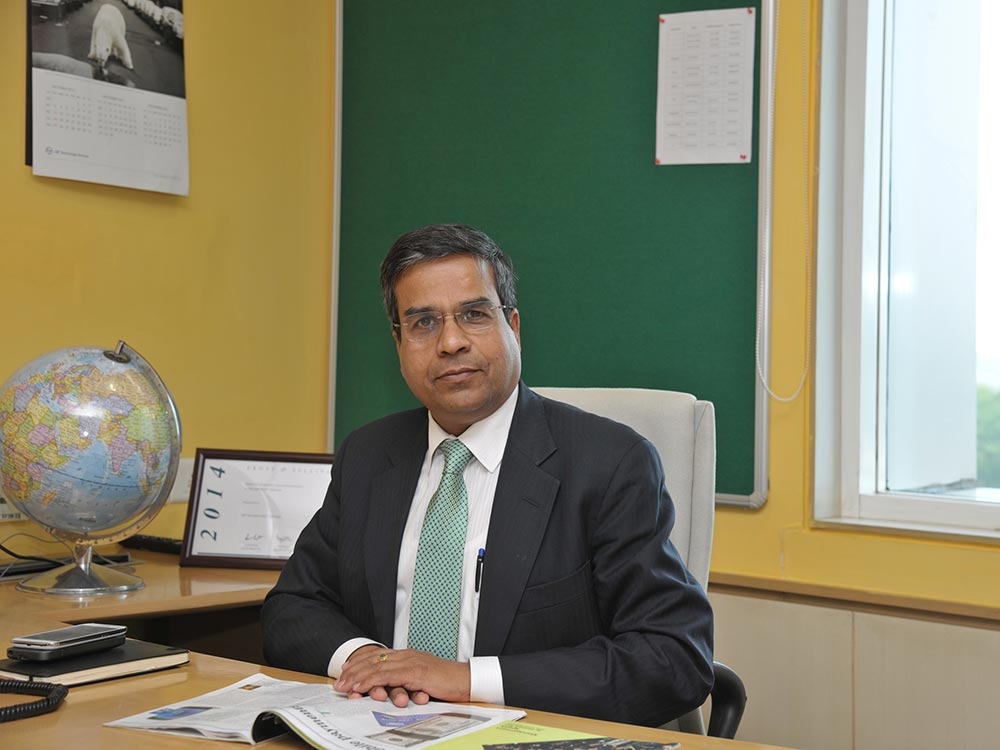
Dr Keshab Panda, chief executive officer & managing director of LTTS has more than 31 years of experience in the technology and engineering services industry. A former ISRO scientist, he joined the L&T group in 2009. He has been with LTTS from its inception and saw it through its listing in 2016.
Following are edited excerpts from his recent interview with Value Research Stock Advisor.
Q 1. In LTTS' vision document released in FY18, you had guided for 20% revenue growth, margins of 20%, and also that you would be filing 20 patents every year. Where does this stand?
A. Twenty, twenty, twenty. It was important for me at that time to connect with the employees with a vision statement. I thought this was the appropriate statement for us. In FY18, we had a 20% growth. In FY19 we had a 26% growth. In FY20, two customer issues sprang up and we came down. Now in FY21 Covid-19 has come in. The 20 patents -- we continue to (file them). Our patent count is 550 today. So, this 20 we have achieved. And 20% ebitda we have also achieved.
So if you look at the overall picture, in the last two years or three years only the consistency on that target (is missing). If Covid-19 would not have happened, maybe we would have come close to the goal.
Overall, 20, 20, 20 still holds good. I still believe this company has delivered in the past and will continue (to do so).
It is so important to remember 20, 20, 20 -- we still hold on to it.
Q 2. All in all, where does the vision of becoming a one-billion-dollar enterprise stand? It was supposed to be accomplished this fiscal year. Is there going to be a delay?
A. We did some math and said we are going to come to 880-890 million through organic growth and 100 plus million through M&A. Together, it would come to one billion. (This) definitely is not going to happen in FY21.
The only way it can happen is if I do a big M&A to get to one billion and put a flag there. I don't think that's something we are looking at right now. I am looking at organic growth opportunities. What I would like to see is the M&A adding value to the company in terms of technology and customer expansion, and if we don't see that, then delay in reaching the one billion mark would be okay. I'm not going to destroy the value of the company just to make it to the one billion mark.
This is how we look at it right now.
Q 3. So if things continue on the same path for the economy with improvements being signalled in every quarter, then when could you become a one billion dollar enterprise?
A. First thing I'm doing right now is looking to bring in stability. In Q4, we should come back to the (same level) as Q4 of last year -- in terms of the revenue run rate. When I come back to that revenue run rate, a lot of things change.
At that point, I can think of FY22 -- what should be the growth to get into the 890 million plus 110 million mark.
There are not too many companies out there, which we want to acquire. We'd have to acquire maybe three of them, to get into that (targeted) 100 million M&A mark.
That is the right thing to achieve maybe (by) a delay of a year. Is that going to happen? Delay by a year or two. Yes it is going to happen. So I think everything is on the table. We remember the statement we made. We also want to make sure we don't want to delay that for too long.
Q 4. Over the next five years, what could the group's revenue mix be across the five verticals?
A. Earlier industrial was the biggest vertical. Because it so happened that the background we come from -- Larsen & Toubro -- a lot of engineers from electrical automation came in and some customers were able to get traction immediately.
We did not have the transportation segment. We started building it some time around 2010. And transportation has really grown now to become the biggest vertical.
The medical vertical in the last eight quarters, is contributing substantially both to topline and bottomline. I believe in the next two-three years, this should be doubled.
Industrial -- if we do the maths we can continue to grow at 8-10% year on year because that's highly profitable as well. It is the same as the medical segment.
Transportation will continue to be number one, there's no doubt about it because that's where a lot of opportunities are coming from.
In aerospace we do a lot of work on geo emissions of aeroplanes which is coming up in the next few years. There are new aircraft coming up with hydrogen fuel. And there is a lot of work we do for the new age design to manufacturing. So that's going to be a big area for us.
Number two, I would say would be the industrial and medical segments. Telecom and high tech would come next, and plant engineering would come last. I think that's where the order is going to be in terms of percentage of revenue.
Q 5. You have generated a lot of free cash. What is your intention for spending it? Are you looking at buybacks or dividends or inorganic acquisitions?
A. For dividend we have a policy. We distribute 30-35% percent of profits as dividend so that we will continue. Buyback -- that's not something we are looking at.
We have to have enough cash to make acquisitions.
If a bigger deal comes in, which we think is good from the synergy point of view, we will do it. And we'll do a review in a year or two from today and see how much cash there is and opportunity at hand for M&As.
Can we increase the dividend? At that time we'll look at it. The board will see the best way to take this forward, I would think we should have cash for any M&A that comes. We should be able to get this done with our own cash.
For the full interview and other reports, subscribe to Value Research Stock Advisor at https://www.valueresearchstocks.com/.


__w1000__h564__.jpg)
